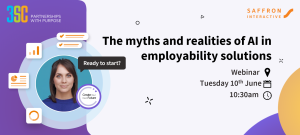What is the Multiple Intelligences theory?
For the most part, it’s common sense! Penned by Howard Gardener in 1983, the theory describes what those of us who went to school already knew: Different people learn in different ways.
Gardener initially described seven basic intelligences. They are:
- Linguistic intelligence: demonstrating abilities with spoken and written language.
- Logical-mathematical intelligence: the capacities to analyse problems logically, carry out mathematical operations, and investigate issues scientifically.
- Musical intelligence: skill in the performance, composition, and recognition of music, patterns or rhythms.
- Kinaesthetic intelligence: using the body or parts of the body to solve problems; learning by doing.
- Spatial (or visual) intelligence: interpreting, recognising and using visual cues such as images and charts and the ability to perceive objects in space.
- Interpersonal intelligence: the ability to understand the intentions and motivations of other people. It allows people to work effectively with others.
- Intrapersonal intelligence: the capacity to understand oneself, appreciating your own feelings, fears and motivations.
The idea of multiple intelligences is now widely accepted in education, and teachers are encouraged to utilise methods that stimulate each of these to get pupils to engage in lessons. The theory is even widely utilised in corporate training.
How can we apply this to e-learning?
There is no reason why multiple intelligences should not be catered for in e-learning. Just because the audience is accessing the course online, it doesn’t mean that all of the users now miraculously learn in the same way – they don’t. As an instructional designer, you need to design courses with a variety of interactions that will allow you to keep learners engaged by appealing to their specific intelligences. I’ve briefly described some examples of how you can do this.
Linguistic: Conversation-style scenarios and links to online forums or chat rooms will benefit linguistic learners. You can also use additional information pop-ups throughout the course or get the learner to use a ‘notepad’ facility to jot down ideas they have as the course progresses.
Logical-mathematical: This type of learner enjoys problem solving activities such as arranging the steps in a diagram or working out the correct answer using a series of clues. Using graphics such as Venn diagrams to illustrate your point will also engage this type of learner.
Musical: You can use word-plays, such as mnemonics, to solidify learning for individuals with musical intelligence. Using audio case studies will engage these learners (but don’t forget to include a transcript for learners that prefer to read the information). Using sounds and music that are relevant to the learning are also good practice.
Kinaesthetic: You can really engage your kinaesthetic learners by giving them the freedom to explore virtual environments and do activities that require them to get physically involved, such as drag and drop interactions.
Spatial: Using graphics and images to back up the information you’re providing will really help to engage visual learners. Avoid using images that aren’t applicable to the learning as these can detract from the message you’re trying to give. A good way of engaging visual learners is to ask them to choose the correct image to answer a question, rather than just sentences.
Interpersonal: You can stimulate interpersonal intelligence using well constructed scenarios. Ask the learner to put themselves in someone else’s shoes to make a decision, or provide advice to a fictional colleague. Get your learners involved with other learners by providing links to online forums and chat rooms.
Intrapersonal: Intrapersonal intelligence focuses on the internal aspect to learning and using reflective exercises is a great way to engage these individuals. Ask your learners to think about how they can apply what they’ve learned to their specific circumstances. Provide links for further private study, as these will often appeal to the intrapersonal learner.
These are just a few ideas. There is so much more that you can do to ensure that the courses you design are engaging for the full range of learners. Just remember that variety is the key; add a little something for everybody and you’re sure to produce a course that all of your learners will enjoy. Next time you’re storyboarding, try it for yourself!




